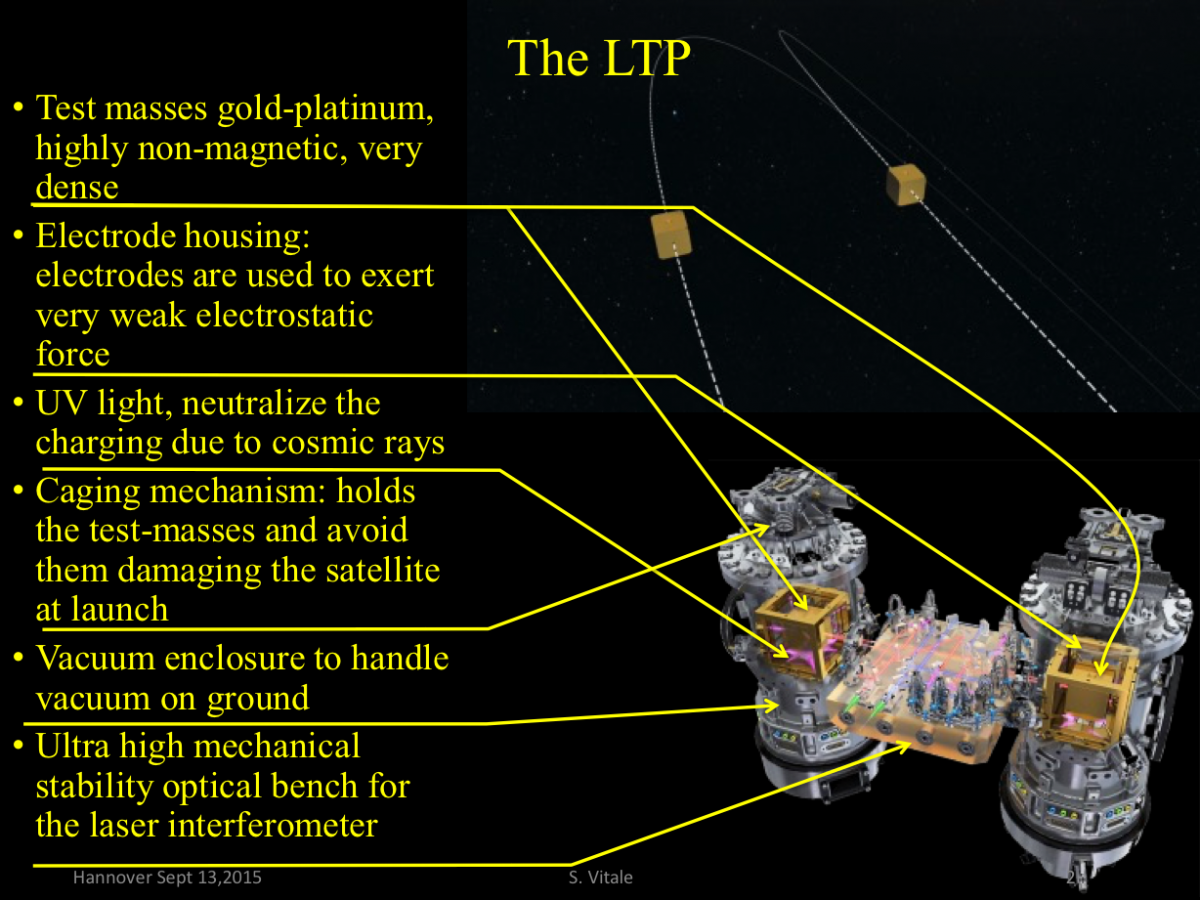LISA Pathfinder is an ESA mission dedicated to performing a relative acceleration measurement between two “geodesic reference” test masses in near-perfect free-fall. The two free-falling test masses inside a single spacecraft at 40 cm separation, and an optical interferometer measures their differential displacement. The target precision of 3 x 10-14 m/s2/Hz1/2 – 30 fm/s2/Hz1/2 with 1 fm = 1 femto-meter – at 1 mHz, or a resolution of 1 fm/s2 in one cycle of 1000 s period. This is within an order of magnitude of the eLISA sensitivity goal and would guarantee most of the eLISA science return. This is also a several order of magnitude improvement on the current state of the art for gravitational gradient measurements, provided by the ESA geodesy mission GOCE.
LISA Pathfinder represents an in-flight experimental verification of most aspects of the eLISA relative acceleration measurement, as well as an orbiting laboratory for understanding the limits of the most ambitious measurements in spacetime physics and of small forces. Specifically, LISA Pathfinder will demonstrate:
- Test masses in near perfect free-fall, well below the femto-g level at 1 mHz and corresponding to sub-femtoNewton forces on a 2 kg test mass and thus better than the best small force measurements obtained on ground with torsion pendulums
- First high precision interferometric displacement measurement in space, demonstrating the pm-level between free-falling test masses (and from test mass to spacecraft) that is necessary for eLISA
- Drag-free spacecraft control at the nm level, using microthrusters to compensate solar radiation pressure and other drag forces in order to follow the free-falling reference test mass orbits
- Flight verification of the eLISA “Gravitational Reference Sensor”, including the multiple degree of freedom electrostatic position sensor and force actuator; UV photoelectric discharge system; test mass launch lock and release mechanisms
- Physical model of the limits for differential acceleration measurements for gravitational physics, for eLISA gravitational wave observation down to 0.1 mHz and even lower frequencies but also for other ambitious measurements with free-falling test masses, including tests of the equivalence principle, the 1/r2 dependence of gravity and relativistic tests of orbits in the solar system.


